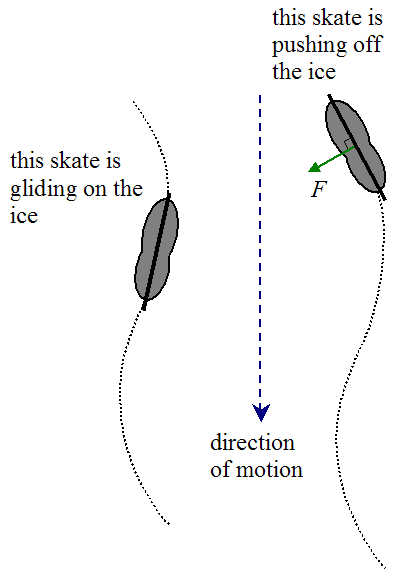The Physics behind Figure Skating
Physics behind Figure Skating
Do you ever wonder how figure skaters get on the ice so gracefully and are able to spin in constant circles and jump in the air while managing to land on their feet? Figure skating is the type of sport that is quite mesmerizing to watch and really catches one's attention, but really do we know how physically it all works and why sometimes the falls may not land as gracefully?
People often overlook physics in their everyday lives, however, figure skating is a prime example of physics and the way it works with the human body. Figure skating shows basic scientific examples of friction, momentum, and equal and opposite reactions.
You may be wondering, what is the difference between dancing on the surface and dancing on the ice? The big difference here is friction. The Live Science article on Physics of Figure Skating explains that the ice has much less friction than the floor. The article states that friction is, "a force that resists when two objects slide against each other, dissipating their energy of motion. Friction arises because the molecules on both surfaces bond with each other, and resist when the surfaces try to move away and break the bonds." Therefore, the low level of friction on the ice allows the the skater to move much more freely than on land and without the stop of friction. However, it is also important to realize that although there is less friction on ice it still does exist. Without any friction skating would be impossible and there would be no way to stop oneself from moving.
Along with friction, momentum is very vital in figure skating. The correct angle and amount of momentum will change the success of the jump or turn being performed. The amount of force, including the speed and weight, determines the point at which the object will stop moving or in this case land on the ice. Angular motion has a large impact on figure skating, because angular motion is all about something moving around a specific area/ object and the weight distribution around the area.
Ever curious about the reasoning behind a skater bringing in his/her arms when doing a jump or turn? Well, turns out it is not just for the looks but rather because of the physics behind it. Based on the article from Live Science, "a fundamental law of physics holds that momentum is always conserved, meaning that unless some outside force enters a system, its total momentum must stay constant. This law of physics explains why when a figure skater pulls in her arms when executing a turn, she spins more quickly. With arms outstretched, her mass is distributed over a greater space. When she draws her arms inwards, that distribution is reduced, so her speed must pick up to counteract this difference and keep her total momentum constant."
It is really interesting to see how much the success of figure skating can be determined on the physics behind it and how important it is for the skater to be knowledgable about these causes to prevent failure or incorrect form.
Sources:
Deborah King Associate Professor, Department of Exercise and Sport Sciences , Ithaca College. “Lutz or Flutz? The Tricky Physics of Figure Skating.” The Conversation, 25 Oct. 2017.
Moskowitz, Clara. “The Physics of Figure Skating.” LiveScience, Purch, 16 Feb. 2010.
Olson, Eric R. “The Physics of Figure Skating.” Scientific American Blog Network, 23 Feb. 2010.
/GettyImages-483918240-58dd28f55f9b5846839ebea5.jpg)


This is just like the movie "Ice Princess"! I wonder what difference of friction on 'old' ice versus freshly cleaned ice by a Zamboni is? Does it change the physics behind the jumps and turns or is just a minor difference in friction?
ReplyDeleteThis is so interesting! This makes sense now because when I used to figure skate, the positioning of the arms were always important and I could never pinpoint why. I thought it was mostly just for the appearance! Does the amount of pressure put on the skate affect the outcome of the performance?
ReplyDelete